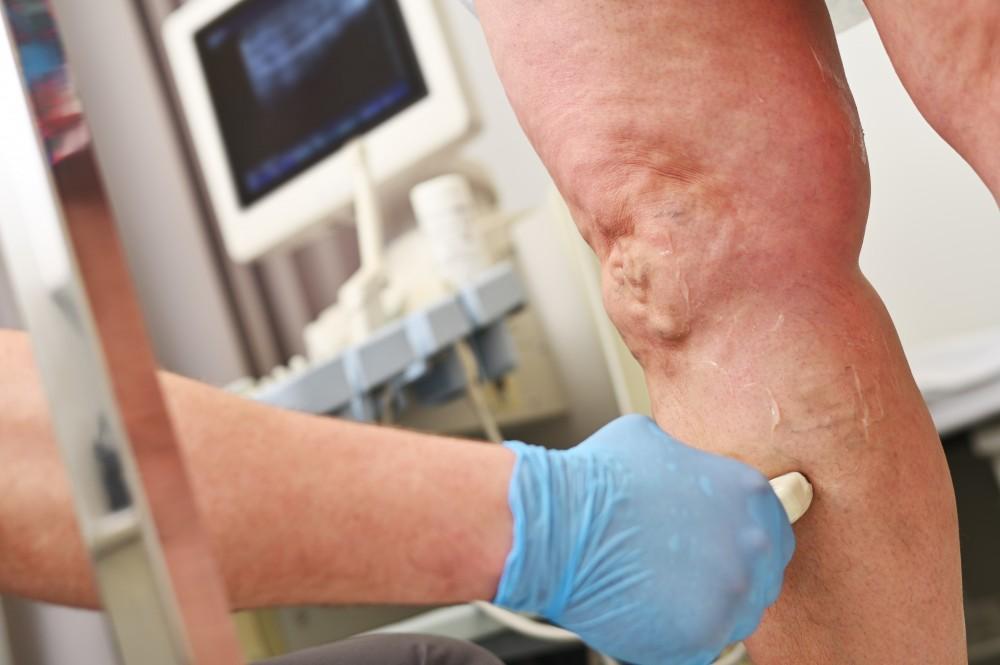
Venous Insufficiency and Venous Ulcers: Diagnosis and Treatment

If you’ve been experiencing persistent leg pain, swelling, or bulging veins, you might be dealing with venous insufficiency.
It’s not something to brush off. This condition can lead to venous ulcers if left untreated.
Thankfully, you don’t have to navigate these conditions on your own. As the only doctor board-certified in phlebology in southern Nassau County, Dr. David T. Jacobs diagnoses and treats venous insufficiency at South Shore Vein and Aesthetic Medicine in Rockville Centre, New York.
If you suspect vein issues, don’t hesitate to reach out to our team for the care you deserve.
In the meantime, keep reading to learn more about how venous insufficiency and venous ulcers are diagnosed and treated.
All about venous insufficiency
Venous insufficiency occurs when the veins in your legs fail to efficiently return blood to your heart. This can cause blood to pool in your lower legs, leading to symptoms such as swelling, pain, and visible varicose veins.
How it’s diagnosed
Dr. Jacobs performs a physical exam and reviews your medical history to diagnose venous insufficiency. He may also use diagnostic tests, such as:
- Doppler ultrasound
- Venogram
Dr. Jacobs also uses the VeinLite device to view and map your veins when preparing for injections and procedures.
How it’s treated
Our team offers industry-leading technologies to address venous insufficiency and reduce your risk of complications from untreated vein issues. Depending on your needs, Dr. Jacobs may recommend:
- Compression stockings
- Endovenous laser ablation
- Traditional sclerotherapy and oxygen foam-based sclerotherapy
- Micropheletomcy (that only uses a 1mm incision)
- VeinGogh treatments
- Varithena
- Cryo-sclerotherapy
Each of these treatments works differently. For example, endovenous laser ablation uses laser energy to target problematic veins, improve blood flow, and reduce bothersome symptoms. Sclerotherapy uses sclerosing agents to close troublesome veins. However, the end result is still the same — improving your vascular health!
In addition to medical treatments like these, heart-friendly lifestyle habits, such as regular exercise, healthy eating, and weight management, can all help support vascular health.
All about venous ulcers
If venous insufficiency isn’t managed properly, venous insufficiency can result in the development of venous ulcers — painful and slow-healing open sores on your legs and ankles.
These ulcers may ooze, itch, swell, and emit a foul odor. Because ulcers are challenging to treat, they can spread and contribute to serious complications like gangrene and even amputation.
How it’s diagnosed
Dr. Jacobs examines your legs and ankles to diagnose venous ulcers, reviews your symptoms, and may analyze imaging studies, such as ultrasounds.
How it’s treated
If you have venous ulcers, proper wound care is non-negotiable. That may include cleaning the wound, applying dressings, and using topical treatments to promote healing. You may also need oral or topical antibiotics.
Where to start
If you suspect you have the start of venous insufficiency or a full-blown ulcer, help is just a call or click away. You can reach South Shore Vein and Aesthetic Medicine in Rockville Centre, New York, by phone at 516-865-1234 or through our scheduling tool.
You Might Also Enjoy...


Facial Veins: Causes, Treatments, and How to Get Rid of Them

Hand Vein Treatment: How to Restore a Youthful Look to Your Hands

Are Varicose Veins Genetic? What You Need to Know About Hereditary Vein Issues

How to Get Rid of Varicose Veins: Top Treatments for Smooth, Healthy Legs


